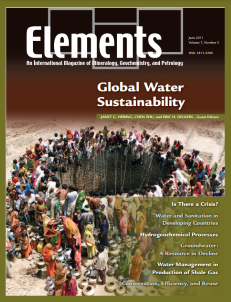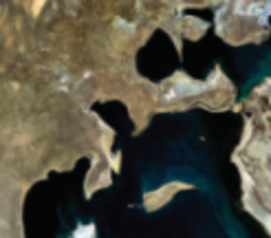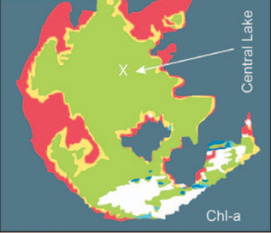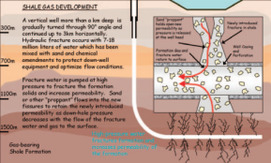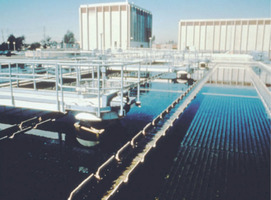
Global Water Sustainability
Janet G. Hering, Chen Zhu, and Eric H. Oelkers – Guest Editors
Table of Contents
The term water resources refers to natural waters (vapor, liquid, or solid) that occur on the Earth and that are of potential use to humans. These resources include oceans, rivers, lakes, groundwater, and glaciers. The Earth has plenty of water, over 1.4 × 109 km3. However, 97% of global water is saline sea water. Of the 3% that is freshwater, nearly 70% is locked in the polar icecaps and gla ciers. The majority of nonglacier freshwater is groundwater (98%). Surface freshwater (rivers and lakes), which has historically served most human needs, constitutes only a small fraction of the Earth’s water resources. Water interacts with minerals, soils, sediments, and rocks, and hence studies of Earth materials have a direct bearing on water resources. Studies of the acquisi tion, mobility, and fate of elements and isotopes in water provide valuable sig natures for tracking water cycles at regional and global scales and are essential for the development of remediation technologies for contaminated water.
- Water: Is There a Global Crisis?
- Water and Sanitation in Developing Countries: Geochemical Aspects of Quality and Treatment
- Hydrogeochemical Processes and Controls on Water Quality and Water Management
- Groundwater: A Resource in Decline
- Water Management Challenges Associated with the Production of Shale Gas by Hydraulic Fracturing
- Water Conservation, Efficiency, and Reuse
11th International Kimberlite Conference
Activation Laboratories (Actlabs)
Australian Scientific Instruments (ASI)
Bruker
CAMECA
CrystalMaker
Cosmochemistry Illustrated
Excalibur Mineral Corporation
Resonetics
RockWare
Savillex
Schweizerbart Borntraeger Science Publishers
SPECTRO
Springer
v7n4 WHEN THE CONTINENTAL CRUST MELTS
Guest editor: Edward W. Sawyer (Université du Québec à Chicoutimi), Michael Brown (University of Maryland), and Bernardo Cesare (University of Padova)
Partial melting is the most important process affecting the continental crust. It is respon sible for the large scale compositional and density structure that has stabilized the crust over geological time. Partial melting occurs extensively in the deep crustal roots of moun tain ranges that form where continents col lide. The thin film of melt that develops on the edges and faces of mineral grains results in a substantial weakening of the crust, which concentrates deformation into the melt bearing rocks and allows them to deform faster. This issue of Elements deals with the source of the heat responsible for widespread melting and the information that can be retrieved from mineral assemblages and microstructures in lower crustal rocks. It also explores the mechanisms of melt transfer and the large scale geodynamic consequences of melting the crust as it deforms.
- When the Continental Crust Melts Edward W. Sawyer (Lamont-Doherty Earth Observatory, Columbia University), Bernardo Cesare (University of Padova), and Michael Brown (University of Maryland)
- How Does the Continental Crust Get Really Hot? Chris Clark (Curtin University), Ian C. W. Fitzsimons (Curtin University), David Healy (University of Aberdeen), and Simon L. Harley (Edinburgh University)
- Is the Crucible Reproducible? Reconciling Melting Experiments with Thermodynamic Calculations Richard W. White (University of Mainz), Gary Stevens (University of Stellenbosch), and Timothy E. Johnson (University of Mainz)
- Melted Rocks under the Microscope: Microstructures and Their Interpretation Marian B. Holness (University of Cambridge), Bernardo Cesare (University of Padova), and Edward W. Sawyer (Lamont-Doherty Earth Observatory, Columbia University)
- Crustal Melting and the Flow of Mountains Rebecca A. Jamieson (Dalhousie University), Martyn J. Unsworth (University of Alberta), Nigel B. W. Harris (University of Tasmania), Claudio L. Rosenberg (Free University of Berlin), and Karel Schulmann (Charles University)
- Organizing Melt Flow through the Crust Michael Brown (University of Maryland), Fawna J. Korhonen (Curtin University), and Christine S. Siddoway (Colorado College)
- Cosmochemistry (February 2011)
- Iron in Earth Surface Systems (April 2011)
- Global Water Sustainability (June 2011)
- When the Continental Crust Melts (August 2011)
- Tourmaline (October 2011)
- Mine Wastes (December 2011)
Download 2012 Thematic Preview


